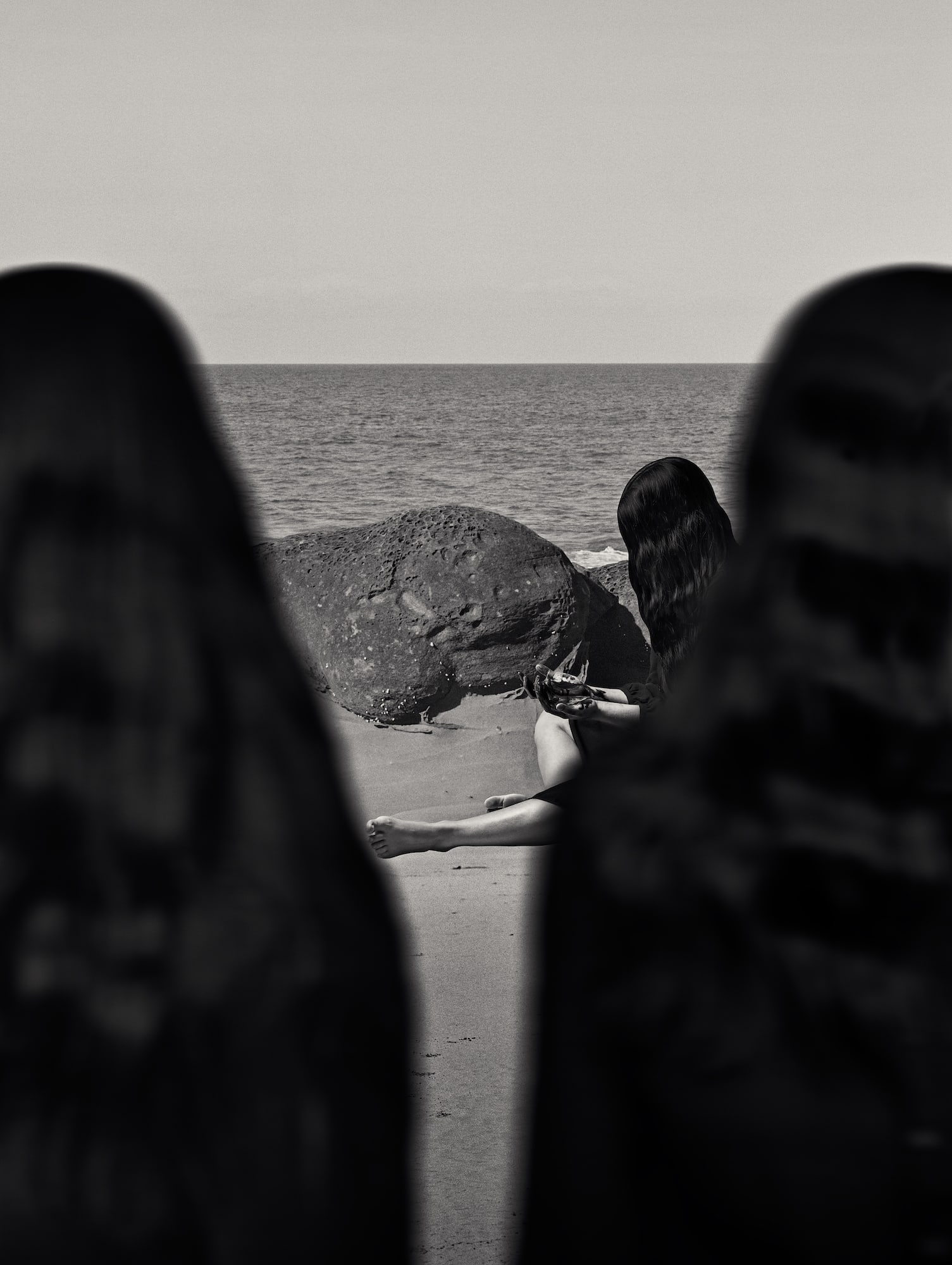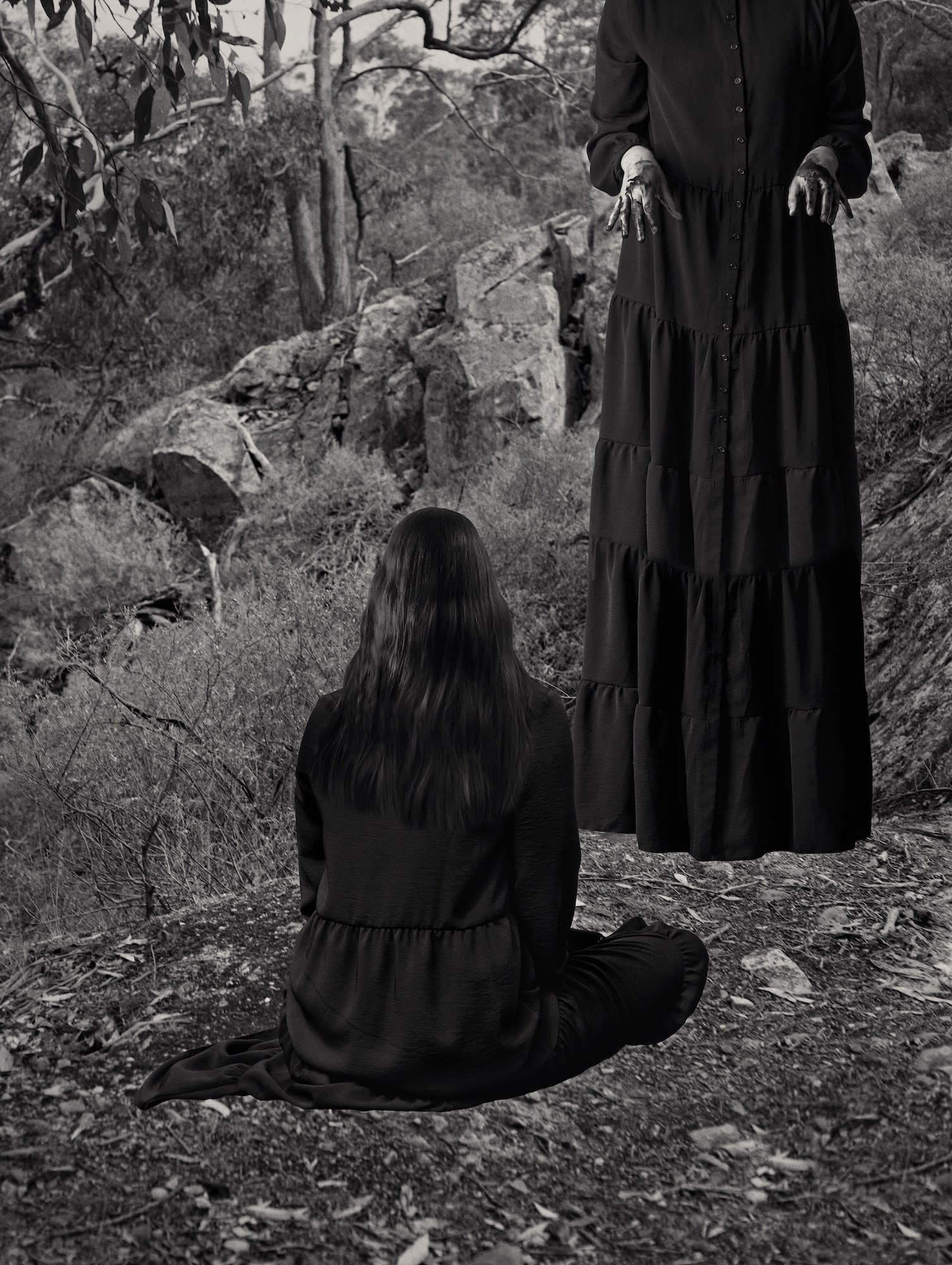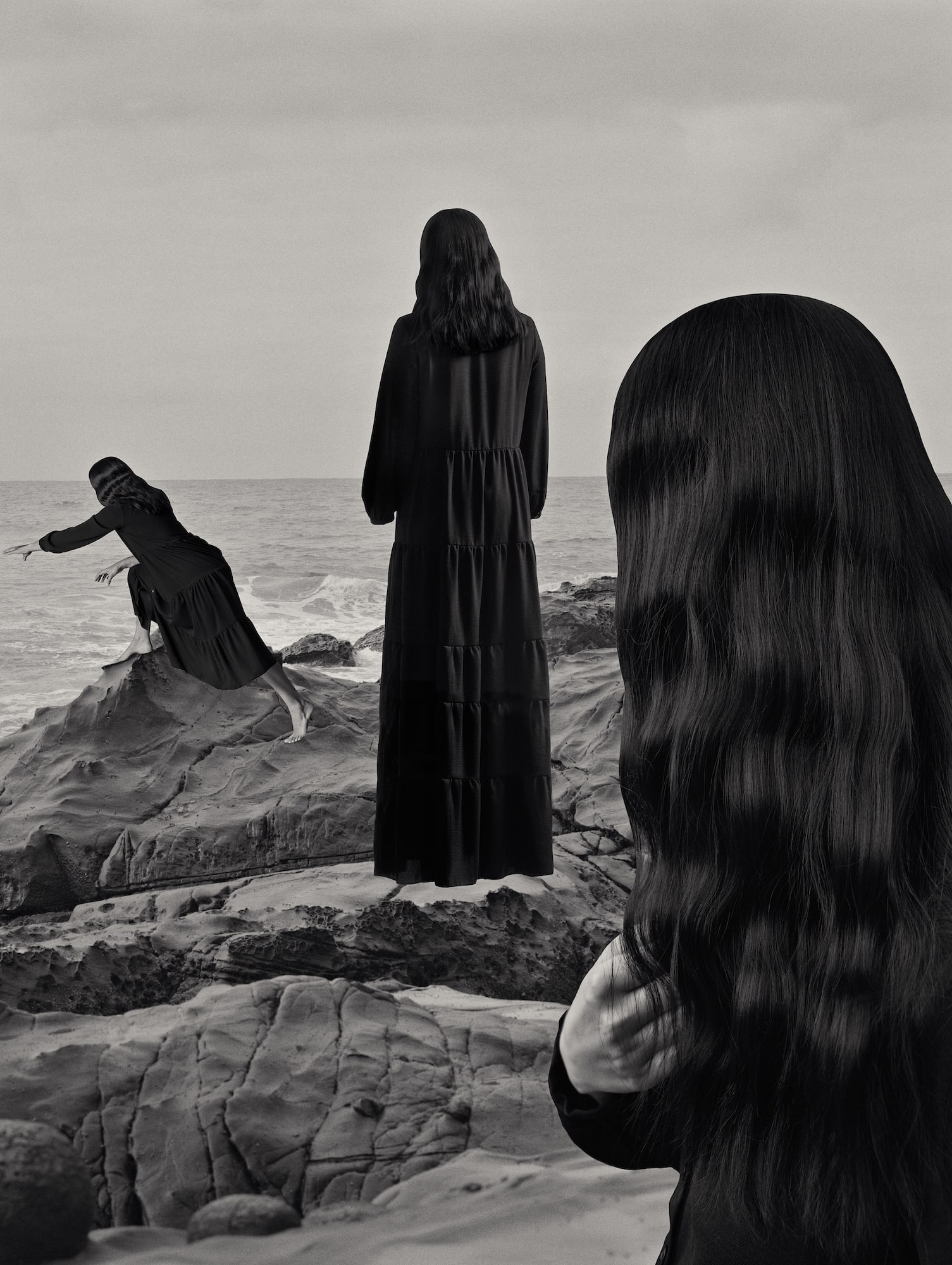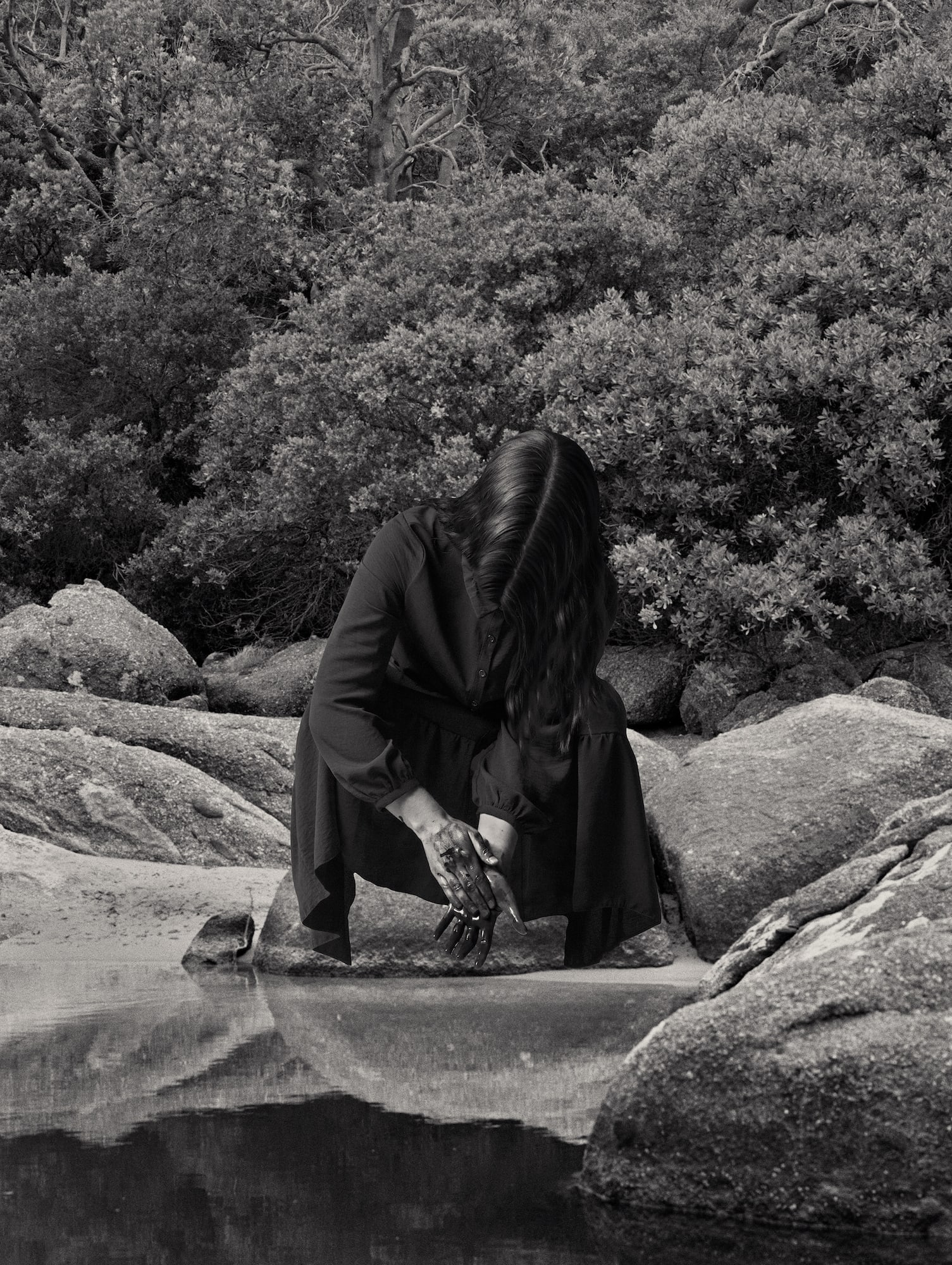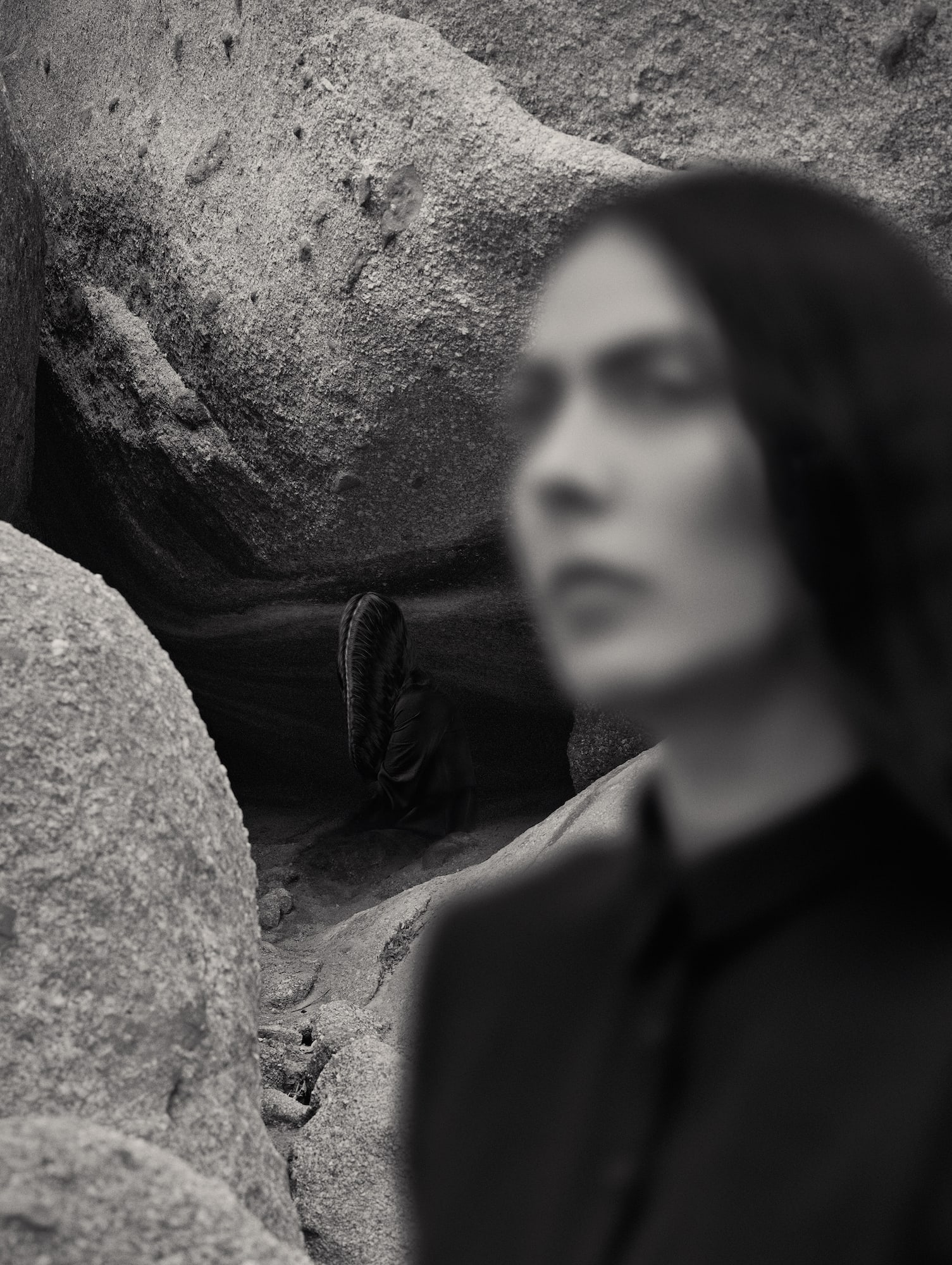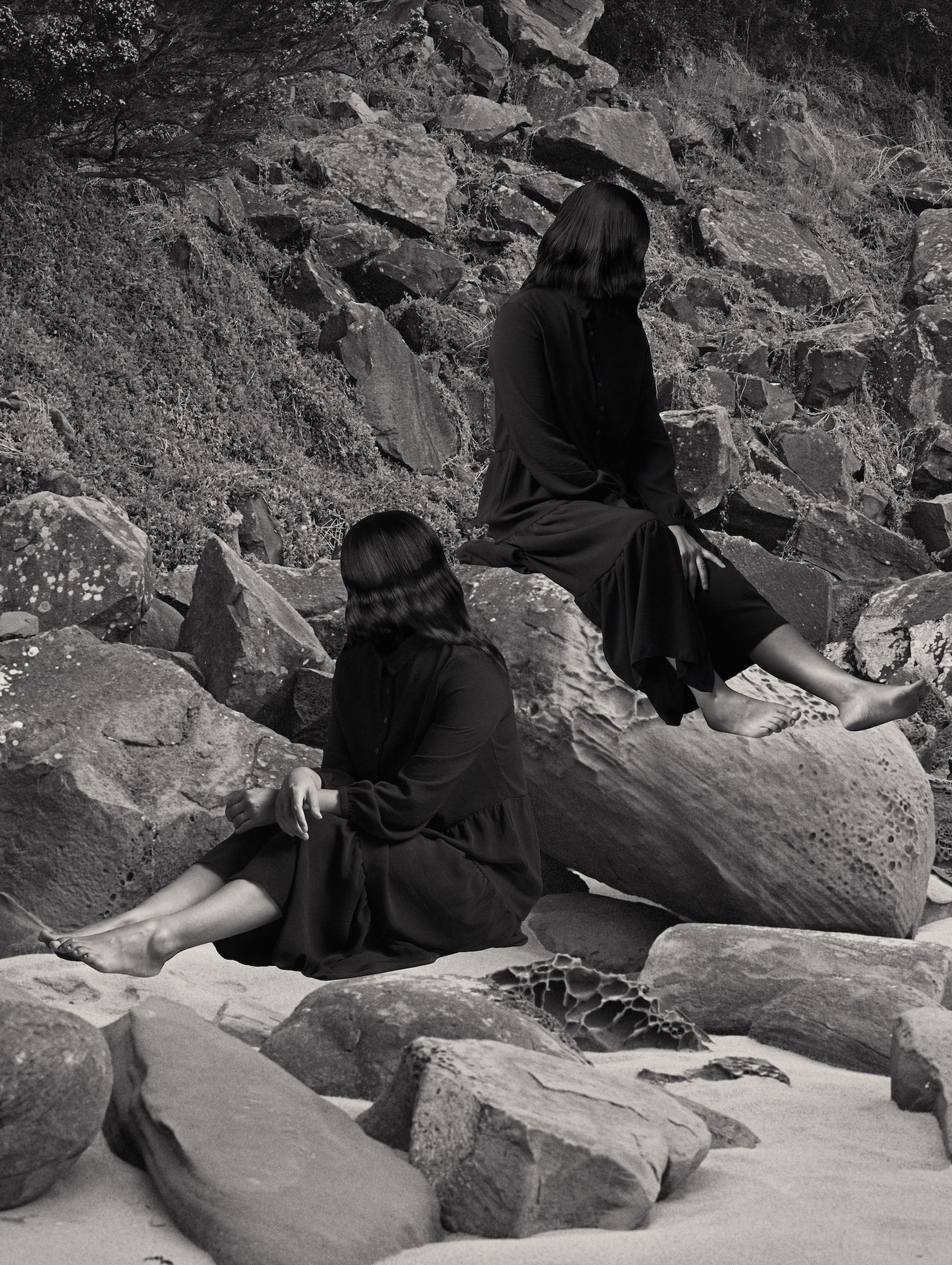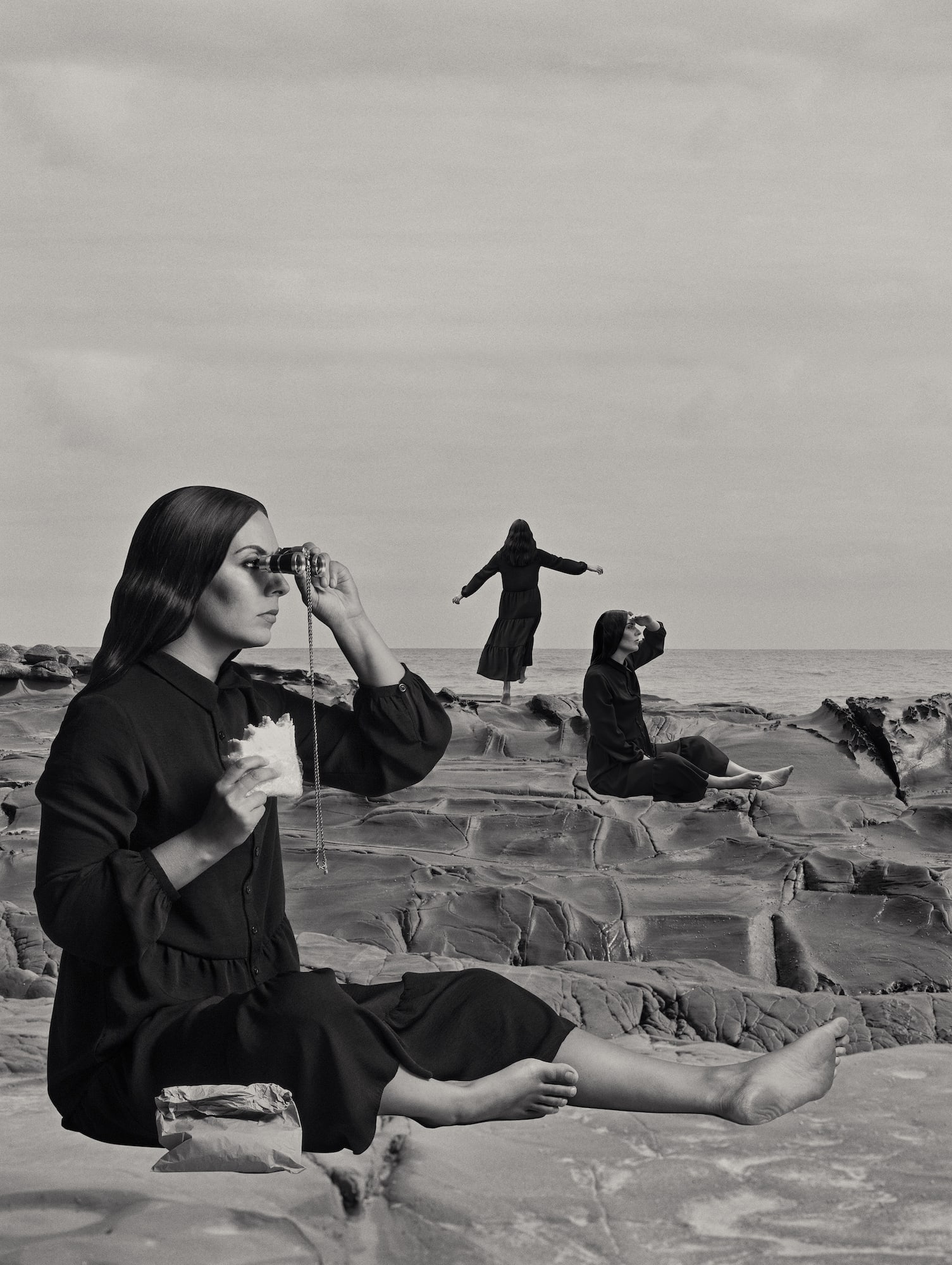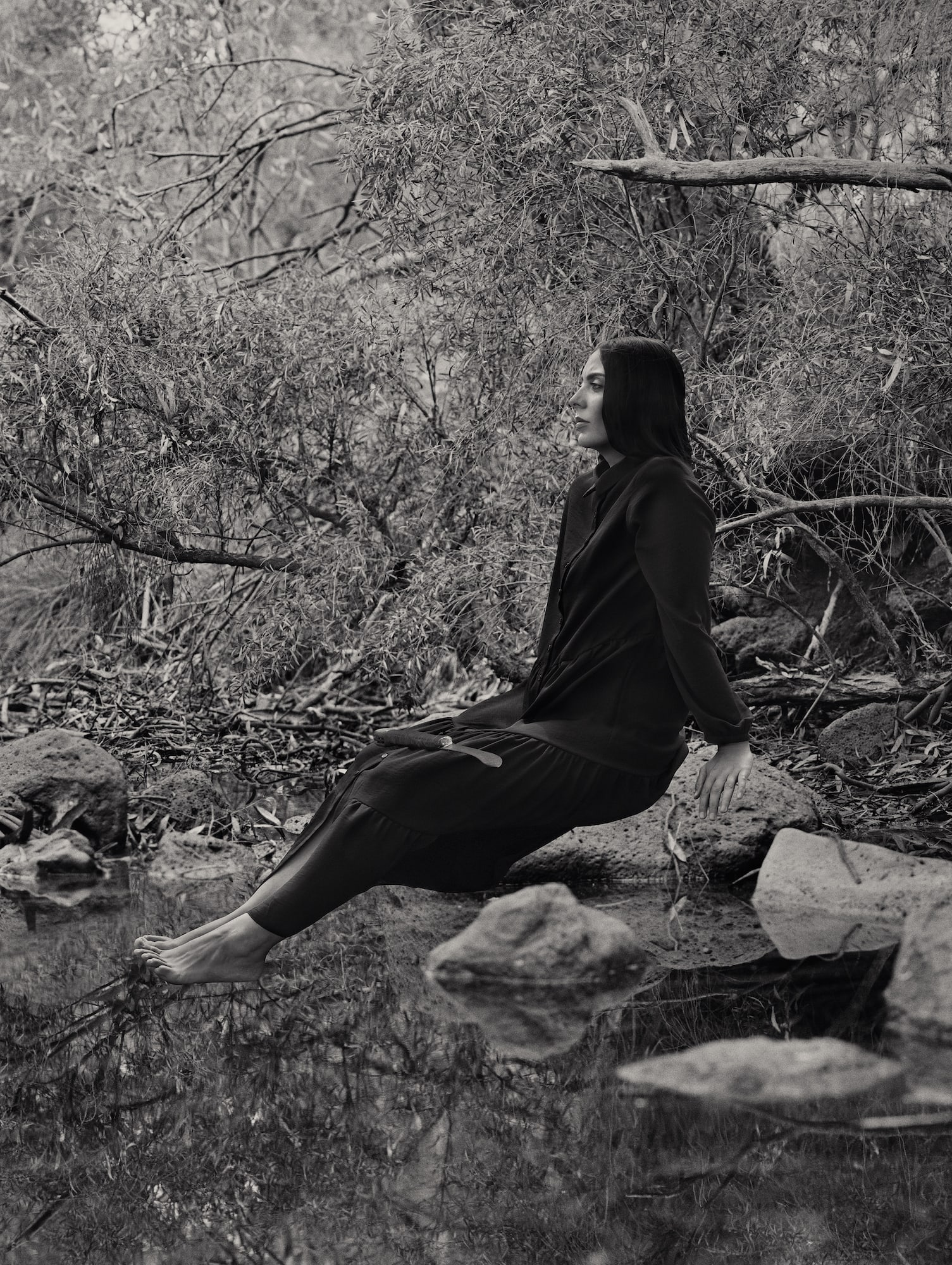
Exhibition Essay
I Will Survive is concerned with the stories of caution, superstitions, and instructions for survival that were passed on to Hayley Millar-Baker as a child. In this deeply personal series, the artist looks back on pivotal memories from her childhood that continue to inform who she has become as an adult.
The underlying stories in I Will Survive are rooted in early experiences of being in nature with family around regional Victoria – the artist grew up with myths and warnings of spirits, Puma’s stalking the mountain range, sharks waiting to ravage you at the bottom of a cli , a crocodile living in Nan’s dam – although if you ask her nicely she’ll make sure the crocodile won’t eat you.
The works are enigmatic in the content of the stories that are retold – with clear storytelling structure and notions of place eschewed for a more abstracted image that give us a glimpse into a memory – as if turning on a light in a dark room for a split second, and encountering a surreal scene whose ultimate meaning is left with the audience.
Millar-Baker’s works pair landscape and studio photography. In considering the way that memories morph and shift over time, the artist has taken images from signi cant locations and inserted self-portraits taken in the studio over scenic backdrops. In their construction, the artist’s formal training as a painter becomes apparent. She works expertly with light, texture and composition to create each piece, taking imagery directly from the world and interpreting it through experiences, knowledge and superstitions she has inherited from her family across Gunditjmara and migrant legacies.
The use of self-portraiture casts the artist as a con uence point of these histories that meet on landscapes signi cant to her family. The artist considers how this passage of the migrant and Aboriginal history has shaped her – as an adult in these images she is still the custodian of foundational memories formed as a child.
The gure of Millar-Baker oats on top of these constructed dreamscapes as if a specter, shifting in and out of focus, playing every role in each story. We see her as a faceless gure with blood on her hands in several of the works – and in some images looking back on herself, and in another being stalked by a mysteriously looming gure in the background. She plays the role of a bush spirit, ghost and monster.
The works consider the ways that memories shift over time. Carried from a young age, these experiences and stories become embellished, or accrue heightened emotional resonances – they shift and change in the constant retelling. Some become completely false memories, others more cinematic and profound. The stories and memories that are planted as early seeds grow and change as we experience life.
I Will Survive is not solely about the artist as an individual, even with its repetition of the single gure. While deeply introspective, it is constructed within a process of understanding one’s place within a much broader world, full of other people and perspectives, of histories and experiences far beyond one’s own. It
is as much about empathy and making sense of the lives of others, of the countless generations of stories embedded in the landscape, as it is about one’s own personal experience.
The various roles that Millar-Baker plays in I Will Survive points to the myriad positions that we come to inhabit. Our inner-life is constantly in ux, and our understanding of our personal and collective histories can morph with time and re ection. This series shows the artist in a mode of deep listening to the histories and stories of her family that she carries with her, of turning over the complex facets of one’s character, and attempting to get a clearer vision of who we are as we consider how we will pass on knowledge and culture to those who come after us. In bringing together both Aboriginal and migrant stories and experiences into single works, Millar-Baker is thinking deeply about intersections ancient relationships to the land with much newer histories.
I Will Survive overlays a past, present and a future into the one image, and o ers us our own dark and meditative mirror to consider how the fundamental memories we hold are always shifting, and will continue to shape who we will become.
This series is a signi cant departure from Millar-Baker’s celebrated work that has come into its own over the past ve years. Since rst using archival imagery and photographic assemblage, Millar-Baker has presented works that piece together the stories that bring out the hidden and unwritten in the history of
this continent, told to her from her mother and grandmother, and those who came earlier. In I Will Survive, Millar-Baker uses a more subtle form of assemblage to explicitly convey the psychological states that underpin her work, and how her own voice will continue to pass on stories, culture and knowledge. The uncanny and dark undertones to I Will Survive, present in multiple gures the artist portrays and the surreal landscapes she inhabits, reminds us that the passage of culture and memory is not linear.
This body of work has sprung forth from a period of transformative self-re ection about our relationship to our own personal mythologies, and to the world around us. The ambiguity of the stories behind the I Will Survive works means that questions of narrative structure – of how we arrived here, where ‘here’ is, or where we’re heading, are up to the viewer. Hayley Millar-Baker’s work points to the complex historical currents and legacies that shape who we are, and reminds us that this process of re ection is vitally important, even if what we nd in ourselves is uncomfortable to face.
Subtly set to the soundtrack of the Gloria Gaynor disco hit through the title of the series, I Will Survive is in its essence playfully strong-willed and de ant. It draws on a near universally familiar anthem about learning from fear, and gaining perspective and strength through overcoming hurt and adversity. Like the song, I Will Survive is emblematic of coming to terms with what can be left in the past, and what we should carry on into the future.





